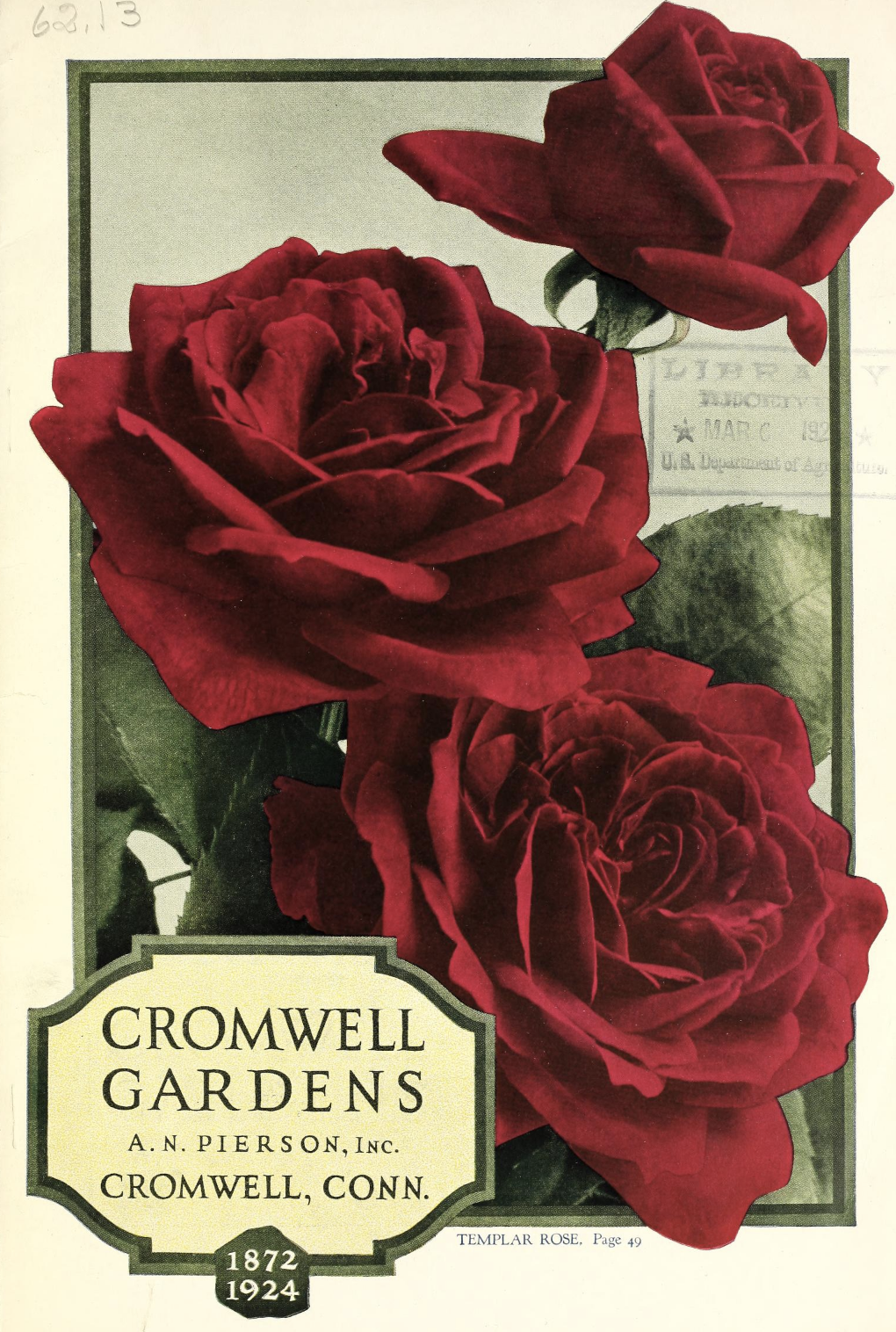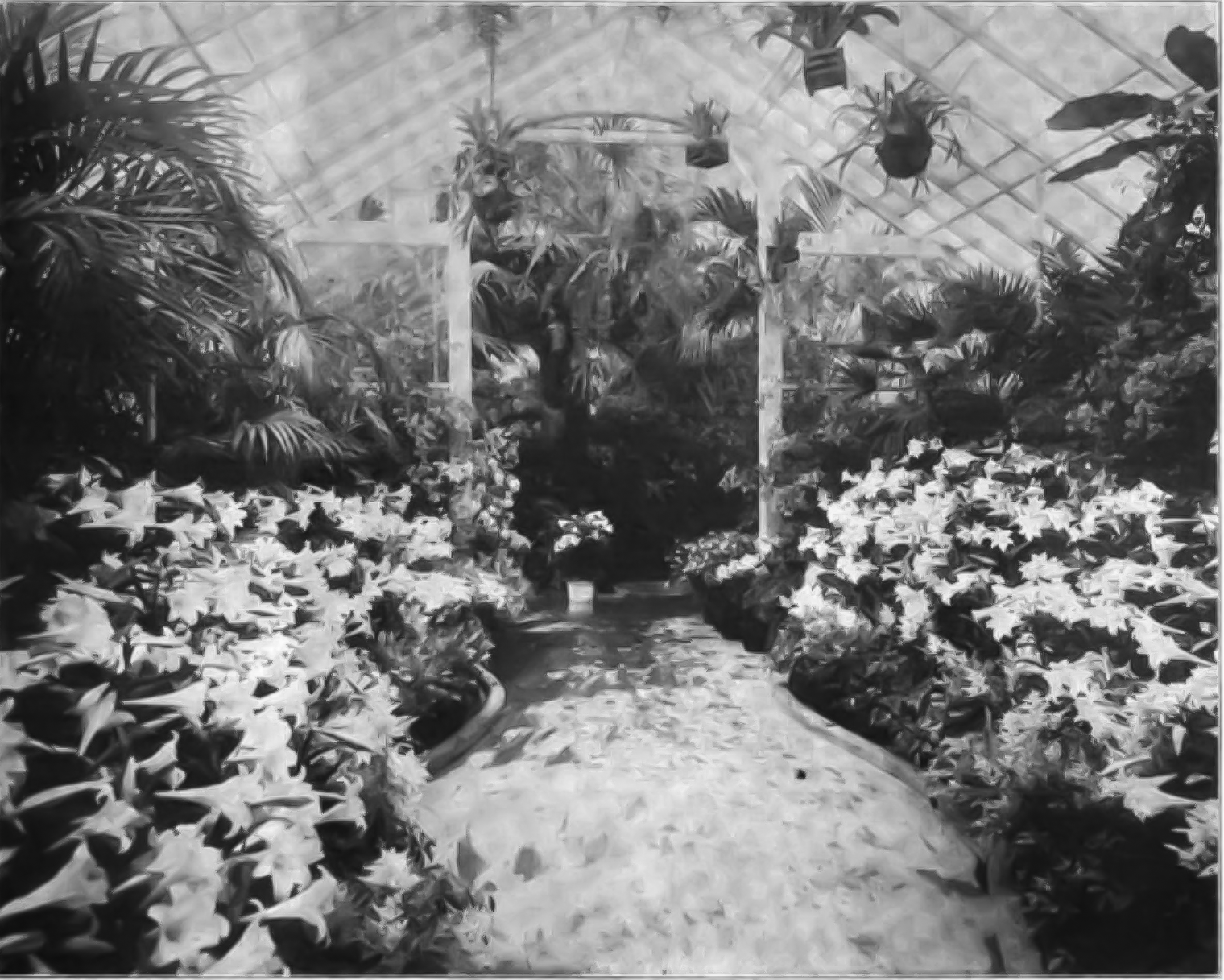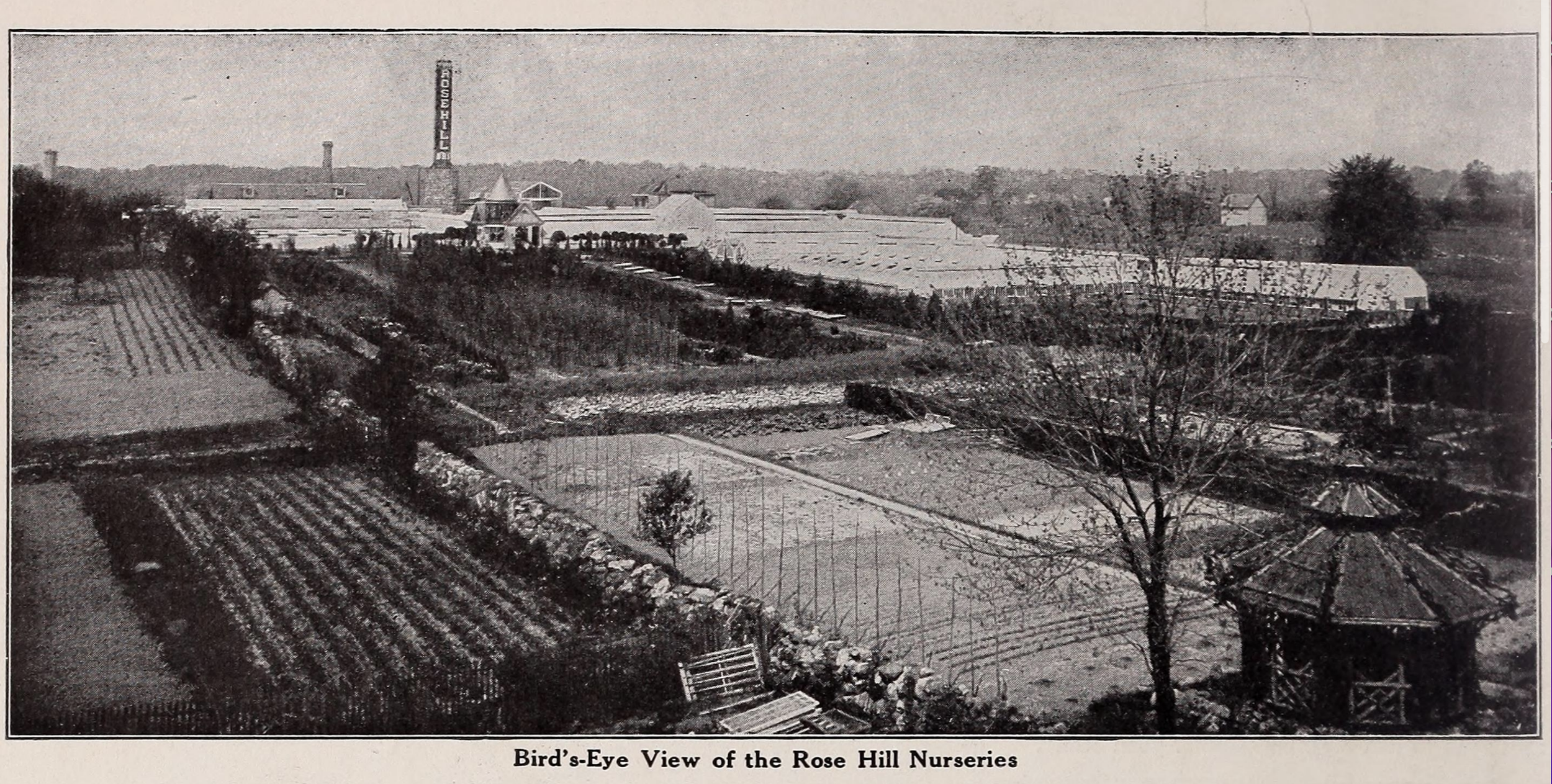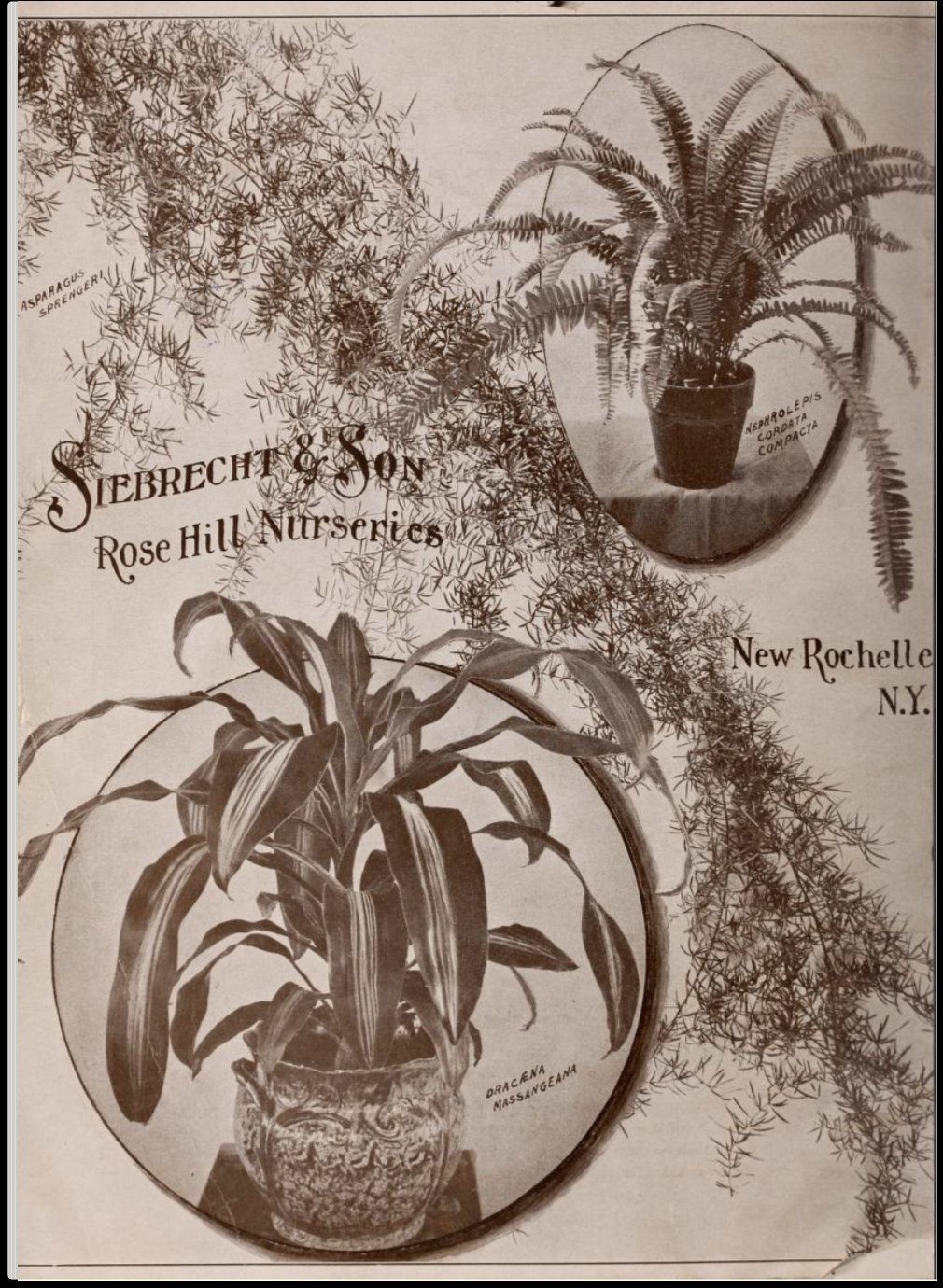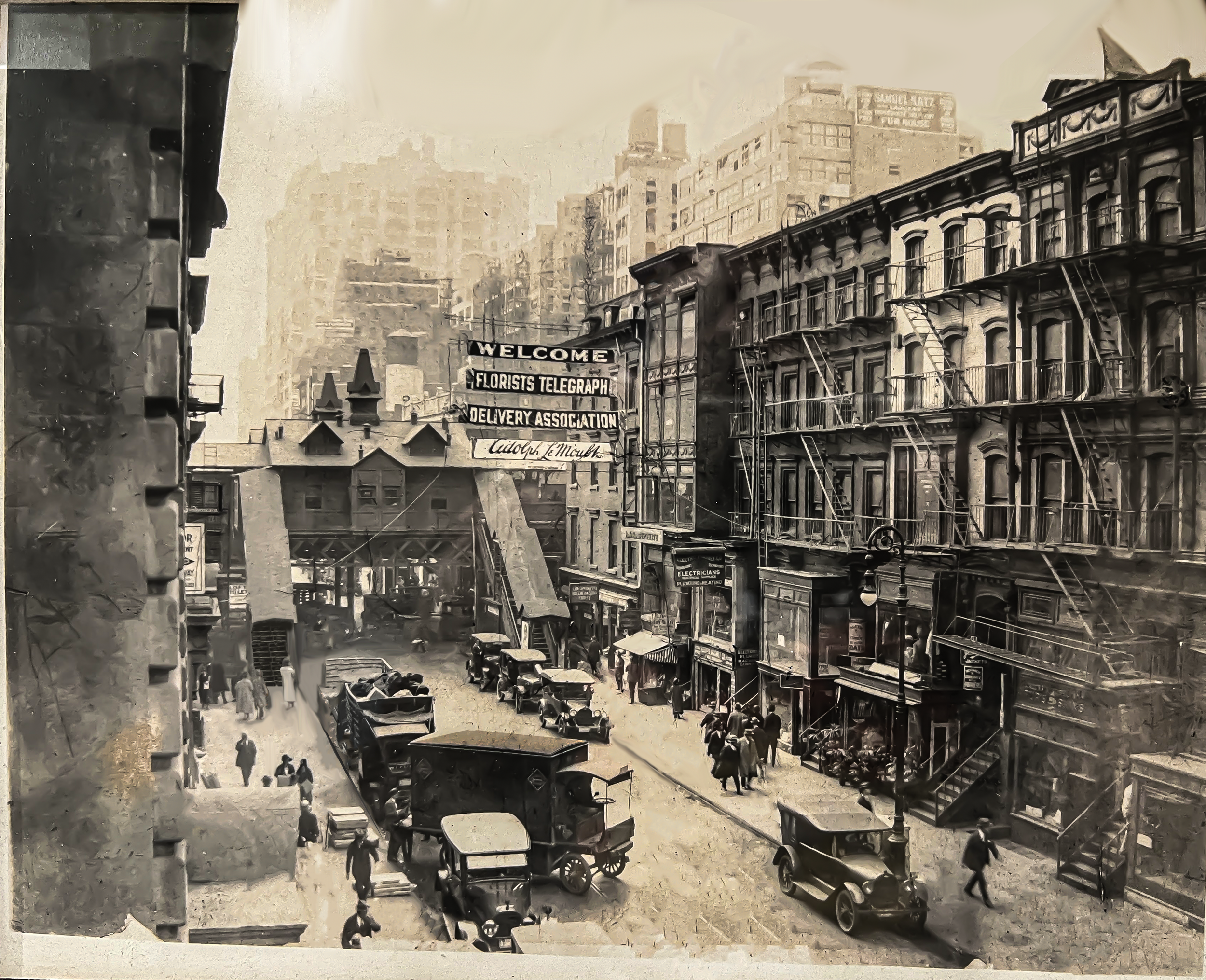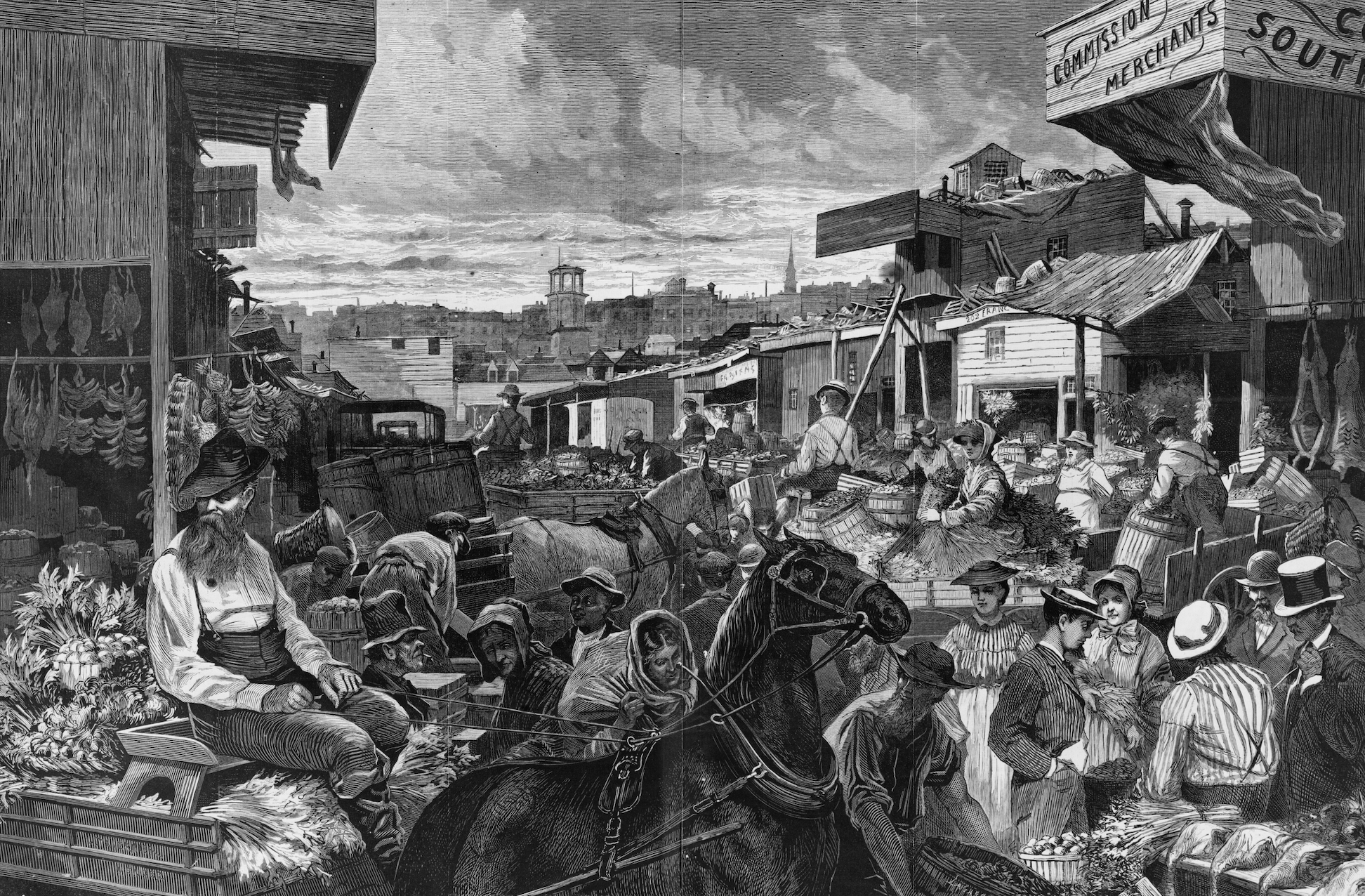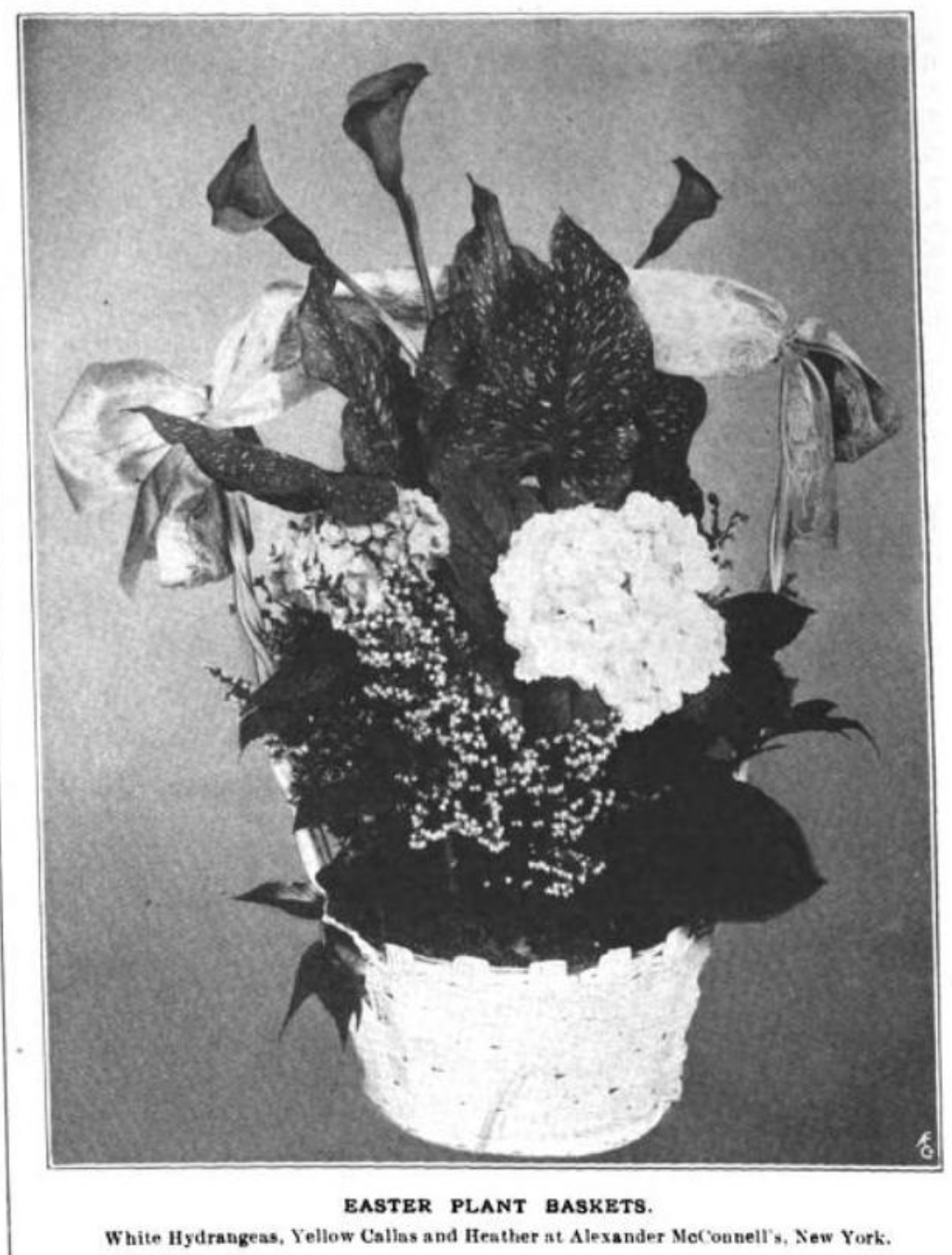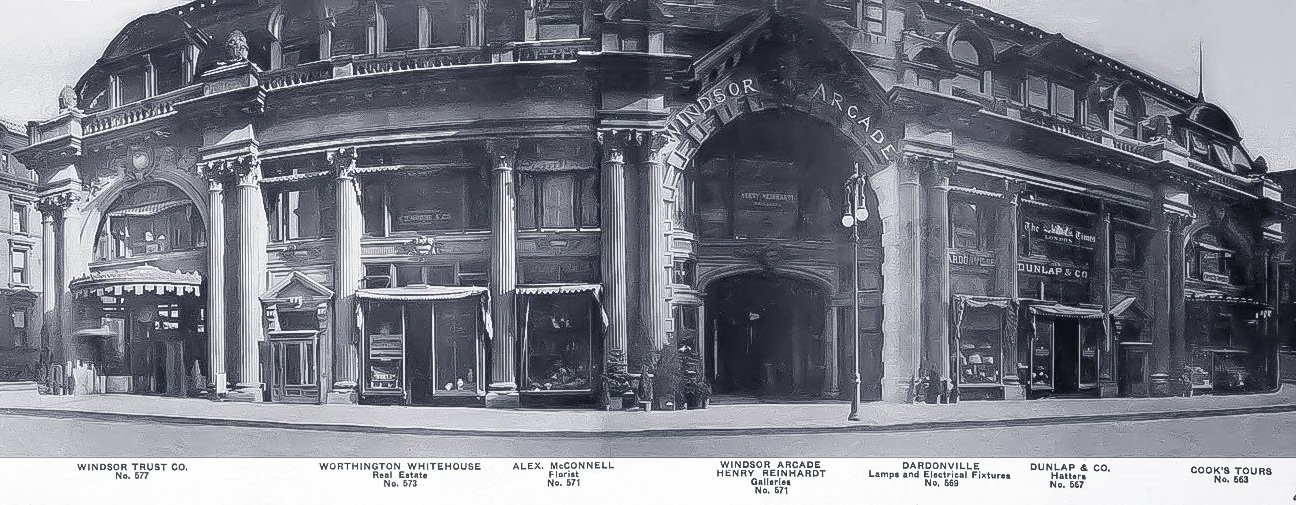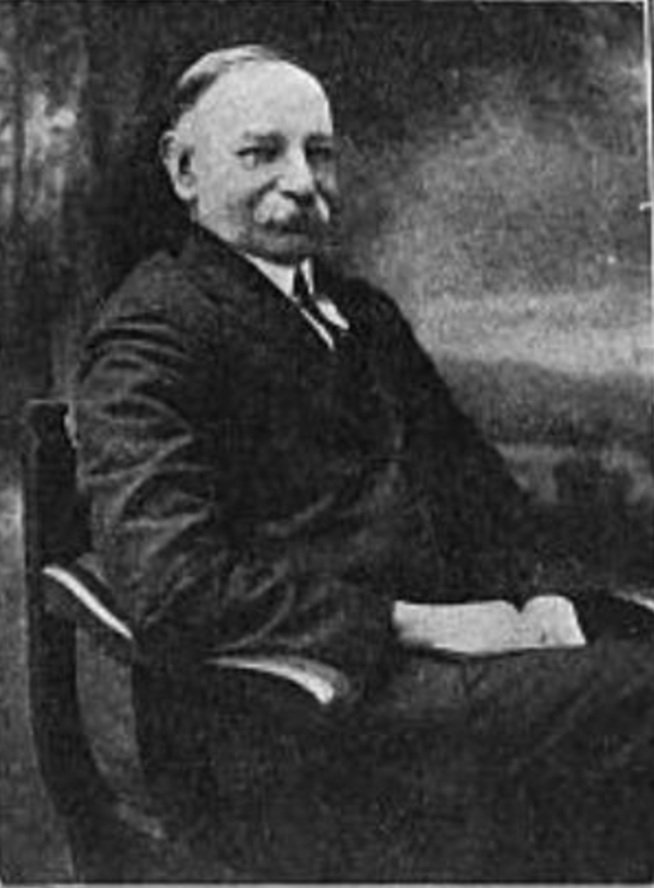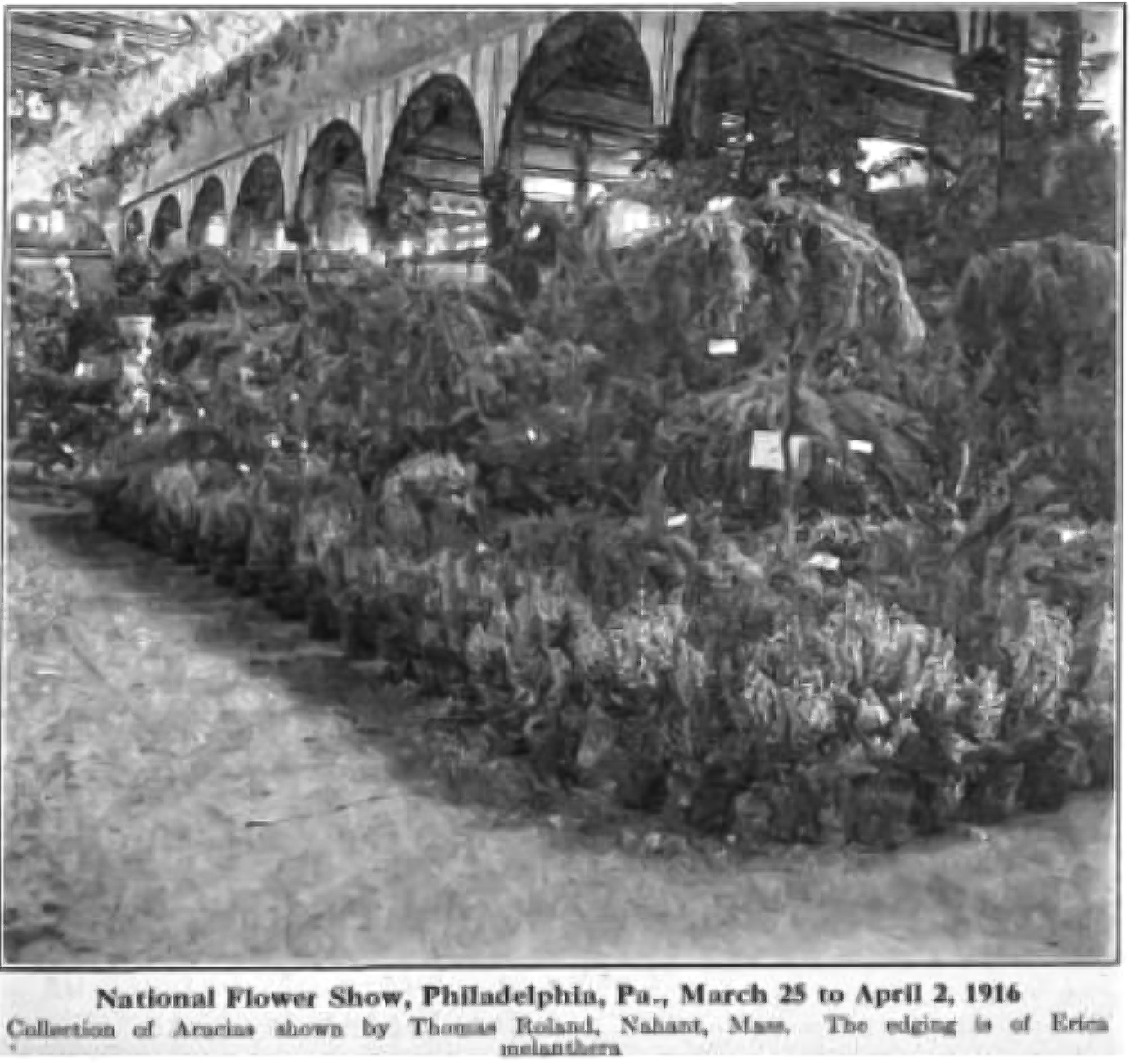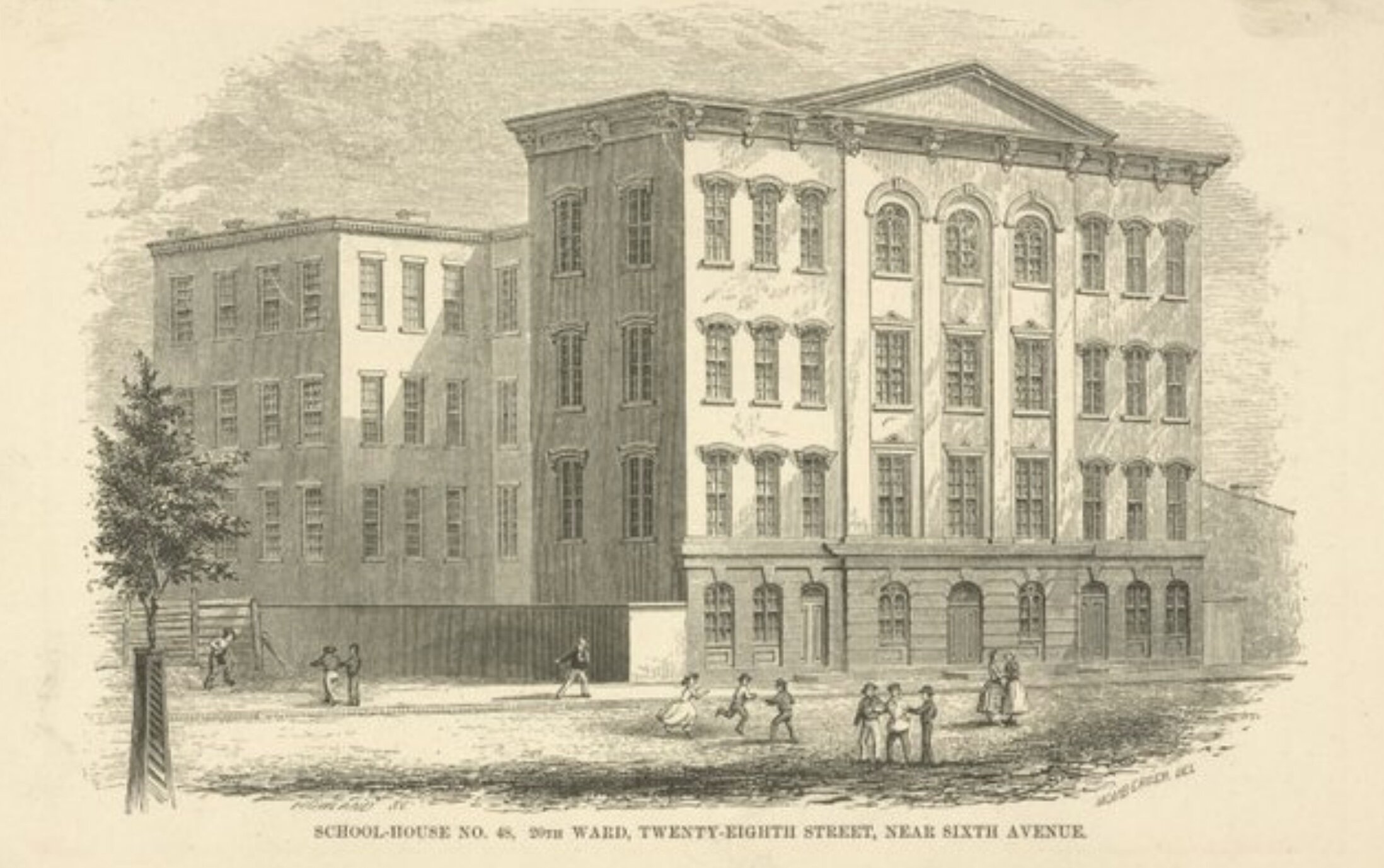Our History
of the Floral District on 28th Street
tenderloin * New York
1870-1940s
In the late 1870s, wholesale cut flower companies gradually began relocating to 28th Street and its surrounding areas in New York. They moved to 28th Street because they were part of trade organizations that formed for the industry to protect each other. The first New York Cut Flower Exchange & the New York Cut Flower Commission. They influenced other wholesale companies to move to the surrounding area. Soon the district had over 200 wholesale and suppliers in the district. From 23rd street between 6th and 7th avenue to 34th street. Eventually, it concentrated from 25th Street to 29th Street.
George E . Bradshaw & John R . Hartman
It was during this time that George E . Bradshaw and John R . Hartman established one of the very first Wholesale florist companies in 1891, setting up shop at 53 West 28th Street.
GUTTMAN & RAYNOR WHOLESALE FLORIST EST.1894
101 WEST 28TH STREET
ALEXANDER J. GUTTMAN
Alexander aspired to enlighten the public about the intricacies of the flower trade. He grew increasingly frustrated by the lack of interest from the newspapers of his time in shedding light on this subject. It is only now, a century later, that we are taking steps to rectify this oversight.
A highly respected figure, Alexander emerged as a leader in his field over three decades. With a profound education and eloquent speech, he perpetually held the belief that his trade was a noble endeavor, breathing life into all it touched.
1895 Easter Week at the District 28th Street
SNOW STORM JANUARY 1908 on 28th street between 6th Avenue & Broadway.
The above image is the interior of Raynor’s wholesale store on 28th street in 1895 Easter Week. He sold cut flowers. What was interesting they used wooden boxes that were recycled. The paper boxes didn’t come into play until the late teens and early 20s. So they used horses drawn carts and wagons to distribute the flowers around town. They packed the flowers with discarded old newspapers. There were no plastic sheets or cellophane at the time. So they were greener than I thought. These guys were a rough bunch and many were as educated as you think. But the thing they had was pure determination and fire in their bellies. I could just hear them now, arguing, yelling, packing, and conditioning the flowers for the orders daily.
Millang Wholesale Florist
The Millang family has been in the District from the 1870s to the 1960s. Two generations prospered in the floral district. Of Dutch (Father) & German (mother) descent, they arrived in the United States in 1862. Frances Millang’s previous occupation was as a gardener in Germany. After settling initially and growing his stock in Pennsylvania in 1872, he traded with the floral district. Coming right into the cut flower boom, this was the opportunity he seized. By the late 1870s, he was able to open his first wholesale business.
His sons, Frank and Charles, expanded the family business in the district. They were known for the amazing lilies they grew. Therefore, Charles was nicknamed the "Lily King" by the florist industry that sought after his stock.
The Humble Giant
John Donaldson
Duff House
John Donaldson was born locally on 12th July 1855 in Scotland, The son of a farmer, started his gardening apprenticeship which led him to Duff House. Which was the estate of the Duke Fife, who was closely related to the Royal family of England. He worked on private estates for a couple of years. Then he worked for Veitch Nurseries, London. He later worked for the horticulture department of the Zoological Gardens, Regent Park, London. He soon left London for New York. He soon got a job with William Wilson a well-known lily grower in Astoria, Long Island. Then he worked for T. Burroughs Hyatt. 1889 he left Mr. Hyatt and started his own nursery growing carnations, lilies, Ivory, Bonnaffon, Halliday, and Mrs. Jerome Jone Mums in Elmhurst Long Island. He had in 1912 10,000 Scottii Ferns, lilies, Maud Dean, Bonnaffon, Halliday, and Easter plants. He owned 28 city lots and a whole city block. He owned three 300 ft greenhouses loaded with plants.
He worked his way up the New York Cut Flower exchange of 16 years before becoming President. He also was a member and Vice President of the New York Florists' Club since 1890.
He wa a member of the Order of the Scottish Clans and Masonic Order on 24th Street, New York City. He was one of the best bowlers in the Astoria Bowling Team. He was an old-school Presbyterian of a man. His net wealth was over 10 million dollars in 1912.
Rose King of America
Born on September 1, 1850, in Skane Lan, Sweden, Andrew N. Pierson (1 Sep 1850 – 29 Oct 1925) originally went by the name Anders Nil Persson. In 1872, he established a small nursery, known as A.N. Pierson’s, Inc. or Cromwell Gardens, located in Cromwell, Connecticut. Over time, Cromwell Gardens grew to become the largest commercial rose grower in the United States.
By the year 1885, the Pierson Floral Nursery, which saw the participation of not only Mr. and Mrs. Pierson but also their children, was actively marketing flowers to New York City.
In their 1918 catalog, it was proudly announced that Cromwell Gardens boasted 500 employees and was home to 5000 plants. By 1986, the nursery was exporting a staggering 6 million roses annually, along with other varieties of flowers, as well as "dish gardens and terrarium plants." Notably, in the 1980s, A.N. Pierson was honored with the prestigious Century Farm Award by the Connecticut Agricultural Experiment Station.
By 1925, the company had grown to become the second largest greenhouse operation globally.
The company's rose production, comprising about 75 to 80 percent, was primarily dedicated to a luxurious velvety red hybrid tea rose known as "Royalty." This long-stemmed champion ranged from 22 to 30 inches in length.
Among other popular hybrid tea varieties were Bridal White, Bridal Pink, Sonia (salmon), White Butterfly, Golden Fantasie, and Lavande (almost purple). Alongside the popular hybrid teas with their long stems, there were also shorter-stemmed sweetheart roses, measuring between 10 and 14 inches, including Jack Frost (white), Jacqueline (red), Co-Ed (yellow), and Excitement (yellow).
Growing roses was no simple task; it demanded meticulous care and attention. A rosebush required four months to be brought into production, and after being "pinched" or pruned, roses would bloom within six to eight weeks. Stems with tight buds were harvested early in the morning, graded, packaged, and promptly refrigerated to fortify them for shipping.
Pierson roses were renowned for their quality, fetching top prices for a good reason. The grading process was performed by hand, adhering to an old-fashioned, labor-intensive method that proved effective for the company. Workers placed the cut stems on a slowly moving belt to ensure they were of the same length. Each rose hung individually for close examination. Stems were measured and bundled together if they were of the same length. As the conveyor belt moved along, employees could also identify "bull heads" or improperly formed roses for removal.
Now, what’s amazing about this story was his great grand son works on same floor where my studio is located. He works for a Coffee Company. I felt that it was no accident. We would run into each other in hallway and enjoyed our small chats. No knowing for over a year that his great grand father was the Rose King and he works in the Floral District, amazing.
Father of Fifth Avenue
Henry Augustus Siebrecht
His store upgraded
Henry Augustus Siebrecht was born in Germany and came to the United States at the age of 17. He received his training in horticulture at the University of Göttingen. After working at Buchanan's nursery in Astoria, Queens, he opened his own floral shop on 15th street in 1867.
Henry Siebrecht became known for his innovative use of orchids in bridal bouquets, which contributed to his success in the New York market. He played a significant role in popularizing the use of orchids in floral arrangements during that time.
In 1870 established a second florist shop & nursery 5th avenue on 42nd street (below image) Maintaining his plants from imports from direct connections botanical and commercial establishments of Europe, the East Indies, Australia and South America. He reputation exploded and used his landscaping talents to create further income.
The backend of his store had a nursery and became so filled with plants coming and going that he need to expand. During the 20 year period he saved and created greenhouses and nurseries in New Rochelle called Rose Hill Nurseries.
He hired Orchid collectors to search for orchids in the West Indies. The Collectors would hire the native communities to help find new species through out the islands of the Caribbean. They would bring them back Greenhouses to mass produce them in the thousands. He was the first introduced Orchids commercially to the industry.
His Greenhouses were specifically divided by each species of flowers and plants that needed a stable climate through out the year. He created the most complete horticultural establishment in the world. So whatever tree or plant you wanted, he had it in his greenhouses. Let’s put it this way, he was the first to grow lily of the valley during winter in 1889. He introduced Japanese & Chinese Ginko trees and help bring them into popularity.
Packing Department
In 1903, Henry Siebrecht's preeminent establishment stood at 425 5th Avenue, situated on 38th Street. It was here that his renown reached unprecedented heights. The expansive showroom showcased an impressive array of his plants and flowers, solidifying itself as a central hub for the elite of society. Affluent patrons often commissioned Siebrecht for the creation of architectural gardens and exquisite decor to adorn their estates. His clients were Russel Sage, Andrew Carnegie, J.P. Morgan, Ulysses Grant, P.T. Barnum and Boss Tweed. He help build up Coney Island.
28th Street looking from Broadway to 6th avenue in the 1920s. You can see the flower boxes on the left sidewalk and on the right the wholesale shops and Tin Pan Alley. The Music producers and writers set up shop above the wholesale stores where they practice their music with cheap pianos. So many of them were practicing at the same time it sounded like tin pans, and the nickname Tin Pan Alley evolved. The songs produced went globally. This was also the first place where Afro-Americans and Jews were able to put their name on their music sheets.
John Young Wholesale Florist
51 West 28th Street - Easter week 1895
John Young hiding his face behind a box of amaryllis he’s holding. He was a character of the bunch. Above image
Very little is known about John Young's personal life, but he accomplished remarkable feats in the Floral District. A Scottish gardener, he immigrated to the United States in 1911 at the age of 22. Deeply immersed in the Floral District community, John worked diligently to ascend in the industry and wholeheartedly dedicated himself to improving his community.
John Young's contributions extended beyond his local community. He held the position of treasurer in the New York Florist Club from the late 1800s to the 1920s. Also, he played pivotal roles as secretary and president of the National Flower Show, an event that traversed various cities each year.
In the 1930s, John Young undertook the cultivation of his stock of flowers in Ulster, New York, which he then transported to the city for sale. His dedication and expertise culminated in a notable achievement when he secured 2nd prize for the best basket at the Philadelphia Flower Show, earning a $2 reward.
What particularly piques my interest in John Young's story is his collaboration with Fred C. W. Brown, an African American who served as Vice President of the Society of American Florist and Ornament Horticulturists during the 1920s. This partnership is especially remarkable given the historical context. During that era, opportunities for African Americans in the New York floral trade were limited, if not openly hostile. As an African American myself, I am deeply moved by this story, as it sheds light on individuals who defied societal barriers and made enduring contributions to their communities and industries, regardless of their background.
Unveiling the Orchid King: The Legacy of Thomas Young Jr.
Thomas Young was not related to John Young above, but both had the same last name. Thomas was of English descent and was an orchid lover, since 1885 he began his interest in orchids and soon started to research the science of and apply it. He was able to be funded by investors’ by 1905 amassing 6 greenhouses of a total of 1,410,000 square feet. Produced 45,000 Cattaleyas and other orchid plants in 1912 in Bound Brook, New Jersey. Each plant produced 3-4 heads of Orchids. He supplied all of the United States. During 1917 his Wholesale Store was located at 57 West 28th Street .
By the 1930s and 1940 orchids became the signature of wealth. Thomas Young Orchids were the most famous hybrid orchard producer in the United States.
During the 40-‘60s his brand would place these promotional flyers—with information about varieties of orchids, and suggestions of how to style them for weddings, etc.— in the flower boxes for retail florists. During this time he shipped over 1,100,000 orchids to 43 distributors across the US. In 1948 his store moved to 47 West 28th street. His corporation had locations from New York, Boston, Chicago and Ohio.
Thomas Young brand was the reason why orchids became a fashion statement and a symbol of luxury. During this era, so much so that a woman never went to a formal event without her orchid corsage during these years. Eleanor Roosevelt ordered specially from this company, which obtained world-renowned fame for the excellence of their orchids. Photos credit: Superior Florist Shop & chadwickorchids.com
Superior Wholesale Cut Flowers
In the 1930s, Louis Rosenberg (R) Side embarked on a journey that would leave a lasting legacy in the floral industry. He founded Superior Wholesale Cut Flowers, a business that would undergo a significant transformation in the 1940s when Louis decided to switch gears and become a florist.
Today, Superior Wholesale Cut Flowers occupies a unique place in New York's history as the oldest florist shop, nestled at 828 6th Avenue, right between 28th and 29th Streets.
Louis's story takes an interesting turn as he was once a member of the prestigious New York Florist Club. However, he made the difficult decision to withdraw from the club due to the prevalence of antisemitic language within its ranks. In an industry where diversity was scarce, Louis stood out as one of the few Jewish wholesale companies, demonstrating resilience and determination.
Fast forward three generations, and Superior Wholesale Cut Flowers still stands tall as the lone survivor among the nearly 200 companies that were contemporaries when they first started. Their enduring presence is a testament to their unwavering commitment to quality and service.
Notably, the company has a history of hiring a diverse and inclusive staff, with a long-standing tradition of employing people of color. This commitment to diversity has been a vital part of their success, and it continues to shape their vibrant and thriving business.
In the annals of floral history, Superior Wholesale Cut Flowers is a remarkable example of resilience, inclusivity, and the enduring power of family-owned businesses. Their story is a testament to the blessings that can come from a strong commitment to excellence and a dedication to inclusivity in the face of challenges.
Florist
1870s to 1940s
Charles Thorley
Florist & Champion of Racial Equality of the Floral District
During the Gilded Age of New York City, Charles F. Thorley emerged as a prominent figure in the florist industry Renowned for his exquisite floral arrangements, his work graced the most exclusive events and prestigious venues, including the Vanderbilt family homes and the Waldorf Astoria hotel..
However, Thorley’s influence extended well beyond his artistic talent. In an era characterized by racial prejudices, he defied societal norms by employing an all–African American staff, a rarity in an industry predominantly led
by white individuals. This groundbreaking decision not only revolutionized the field but also served as a testament to Thorley’s personal beliefs and experiences. During the late nineteenth century, the African-American community in New York City contributed a pool of skilled laborers across various trades, including floristry. Thorley recognized the talent within this community and provided opportunities for Black individuals to thrive from designers to florist massagers. In a society plagued by discrimination and segregation, his actions were bold and commendable. The most notable Afro-American who worked for Thorley was Langston Hughes an American poet, social activist, novelist, playwright, and columnist! Also, his youngest employee James Henry Willaims (florist Messager) was nine years old (1887). He worked for Thorley till 1920 at the age of 43, While he worked for Thorley he met his wife as a teen. When they had their 2nd child, they moved from 318 West 41st Street Hell’s Kitchen to the Tenderloin 228 West 28th Street.
To the left is a photo of James while working for Thorley when he was in his 20s.
Today, Thorley’s legacy as a florist and advocate for racial equality continues to inspire. His courage and unwavering belief in the inherent value of all people demonstrate the power of one person’s determination to create a ripple of change that resonates throughout history. Charles started by working in the Washington Market as a teen, earning him .15 cents a week. At that time, he didn’t know a lily from a carnation, but he recognized the money he could earn.
The above image is Washington Market, where Thorley worked as a young teen.
Thorley raised enough money at the age of 15 (1869) to get his first shop at 63 West 14th Street (The above image was taken in 1892 when he was 35)
His second shop was located at 1173 Broadway, between 27th and 28th Street (below image). The building still exists. This is where he established his reputation and began pioneering the long-stem fashion. Additionally, Thorley’s generosity in providing flowers to his clients exemplified his commitment to excellence and customer satisfaction.
Later, he expanded his presence in
the industry by opening his Third shop on 46th Street and 5th Avenue (above). At the time there were no businesses above 34th Street, just shanties homes & farms. Times Square area was called Longacre Row. He leased the building. from The Times for $27,000. a year. His home and shop eventually became known as the “House of Flowers” (below image).
The image to your right is Thorley’s shop swamped with clients wanting to purchase flowers during Easter week. I couldn’t imagine how many flowers he sold a day.
Thorley’s Family
Below are some of Thorley’s amazing designs back in the late & early 1900s.
So yeah, nothing new under the sun!
Thorley’s Rockstar Designers
James Henry William
James Henry Williams's father was tired of him and his two brothers horsing around after school, so they attended the Colored School, located at 81. 128 West 17th Street. He wanted his boys to start working. So he found a listing in the paper and took his brothers to Charles Thorley Florist's shop. James got his first job as a florist messenger when he was nine (1887).
He worked for Thorley until 1923, when he was 45. He also worked as a designer for Thorney and his 2 other brothers. He was a designer as well. The Staff of designers were all black at Thorley Shop, which led to the success of the firm. They provided such beautiful designs and professionalism that hooked the New York “400” influential and wealthy families of the Gilded Age Society to shop only at Thorley’s Shops. After Thorley's death, he moved on to working full-time as a Red Cap. He broke the color line of the profession in 1903.
Rose Fallon
First Female General Manager & President of a firm in the history of the New York Flower District.
Rose Fallon’s love for flowers began in childhood, growing up in New York. While attending a convent school, she found joy in decorating the altar with flowers and ribbons, eagerly anticipating every opportunity to be part of the school’s decoration team.
During a winter break in college, she landed a job at Charles Thorley’s House of Flowers—a moment she later described as life-changing at the age of 16: “The doors swung open for me.” She had no prior experience working with flowers, but she quickly learned from the seasoned designers, many of whom were extraordinarily talented African American men. Their expertise and artistry shaped her perspective and deepened her appreciation for the craft.
Initially assisting with bridal and hand-tied bouquets, she was soon given the freedom to experiment—choosing ribbons, modifying designs, and even influencing traditional Colonial-style bouquets. At the end of that first week, she was thrilled to discover a raise in her paycheck, marking the beginning of her deep commitment to floristry.
Eventually, she left college and her part-time clerical job, immersing herself entirely in the House of Flowers. With relentless ambition, she worked her way up from an assistant to a buyer, then climbed even higher to become the store’s manager—a rare achievement for a woman in New York’s floral industry at the time. Charles Thorley himself recognized her dedication and talent, entrusting her with increasing responsibilities.
Even after marrying, when her husband encouraged her to leave the shop, she refused, insisting that her work brought her immense joy. Her married name Mr. Rose Van Namee.
At the height of the shop’s success, Rose found herself surrounded by New York’s elite, working with the city’s wealthiest 200 families and rubbing shoulders with renowned figures, including Langston Hughes, who had also worked at the shop.
In 1923, tragedy struck when Charles Thorley passed away unexpectedly after attending a football game at Princeton University. Rose was blindsided to learn that Thorley had made her president of the company and a major financial stakeholder. The weight of responsibility was overwhelming, but she rose to the challenge.
Six months later, she expanded the House of Flowers brand to three buildings, securing what was then the largest lease in New York—an astonishing $5 million deal. Under her leadership, the shop flourished, becoming a floral empire adorned with an exquisite array of flowers and plants. She maintained a strong commitment to American-made goods, ensuring that everything she purchased—from clothing to supplies—supported local manufacturers.
Rose Fallon was more than a florist; she was a trailblazer. She firmly believed that women possessed the same talent, taste, and determination as men. Through hard work and mastery of their craft, she proved that nothing was impossible. As a pioneer in the floral industry, she paved the way for women to break barriers and claim their place in a male-dominated field.
Herbert D. Cummings
Cummings began his career with Charles Thorley as a designer and clerk, quickly rising to become one of Thorley’s most trusted and valued employees. Recognized for his skill and professionalism, he was assigned to personally oversee the floral needs of Thorley’s most distinguished clientele.
In 1902, when Prince Henry of Prussia became the first European royal to visit the United States, Thorley secured the prestigious contract to provide floral arrangements for the grand gala held in the Prince’s honor at the Waldorf-Astoria. Despite attempts by some to discourage the Prince’s staff from selecting Thorley—citing the diversity of his workforce, the Prince’s team remained firm in their decision. For them, excellence took precedence over prejudice.
Thorley was not only responsible for the elaborate floral decor at the event, but he also entrusted Cummings with a critical and highly visible assignment: maintaining fresh flower arrangements in Prince Henry’s suite throughout his stay. This role proved to be a turning point. The Prince was so impressed by Cummings’ talent and dedication that he appointed him as his personal florist for the duration of his American tour.
Cummings accompanied Prince Henry on a journey that included stops in New York, West Point, Milwaukee, Annapolis, Nashville, and Washington, D.C., where the Prince was introduced to President Theodore Roosevelt. Their professional relationship blossomed into a friendship marked by mutual respect.
Deeply moved by the artistry he experienced, Prince Henry placed an extraordinary order: $6,000 worth of flowers, equivalent to approximately $225,000 today, including 15,000 American Beauty and Winter roses, lilies of the valley, and orchids. The blooms were carefully packed in moss and ice boxes to be shipped back to Germany. As a gesture of gratitude, Thorley gave Cummings $600 (about $22,500 today) to cover his travel expenses while accompanying the royal delegation.
In recognition of his exceptional service, Prince Henry gifted Cummings a luxurious gold watch encrusted with diamonds—a remarkable token of esteem.
During his stay in New York, Prince Henry immersed himself in Black American culture, which had left a lasting impression on him since childhood. At the age of 11, he had witnessed a performance by the Fisk Jubilee Singers during their fundraising tour in Germany to support Fisk University, an institution dedicated to educating formerly enslaved individuals. That experience had moved him deeply and stayed with him into adulthood. Also, all who witnessed the singers were moved to tears.
In New York, the Prince enjoyed performances by the Hampton Singers at the Waldorf-Astoria and Carnegie Hall, where he also had a memorable conversation with Booker T. Washington. Delighted by their exchange, the Prince was thrilled when Washington promised to send him a book of traditional Negro spirituals.
His cultural exploration extended beyond concert halls. He visited a saloon on 53rd Street and the Marshall Hotel, a Black-owned venue, where he was enthralled by the energy of the cabaret scene—filled with vibrant performances of ragtime and popular tunes by Black musicians, singers, and dancers.
In Nashville, the Prince’s historic tour was punctuated by a warm welcome from the renowned Jubilee Singers, closing another chapter of his journey with a powerful reminder of the cultural richness and resilience of African American artistry.
Mr. Cummings & Williams worked on this event at the Waldorf-Astoria. 1902
White House visiting the President 1902, Mr. Cumming had his hand in this.
Langston Hughes
The most notable African American to work for Thorley was Langston Hughes—an acclaimed American poet, social activist, novelist, playwright, and columnist.
Hughes worked as a florist delivery person and assisted in the shop for two years, until Charles Thorley’s passing in 1923.
John H . Small & Sons
John H . Small & Sons florist, a pioneer in floral decoration, established their presence at 1153 Broadway between 26th
and 27th Streets . With a legacy spanning several decades, they played a significant role in shaping the floral industry .
Their journey began in the 1870s when they opened their first store in Washington, DC . Known for their innovative approach to floral design, John H . Small & Sons set new standards for creativity and craftsmanship . Their dedication to delivering exceptional arrangements and impeccable service earned them a reputation as a trusted name in the field .
Throughout their existence, John H . Small & Sons continued to evolve and adapt to the changing trends and demands of the industry . Their commitment to excellence and their ability to stay ahead of the curve ensured their
continued success and garnered the loyalty of a diverse clientele. With their shop located at 1153 Broadway, John H . Small & Sons became a go-to destination for those seeking exquisite floral decorations and personalized service . Their contributions to the floral community and their commitment to pushing boundaries in design and customer experience make them a remarkable presence in the history of floristry .
His Store below
1153 Broadway, between 26th & 27th Street
(Store interior Below)
Alex. McConnell Florist
McConnell’s Florist shop 371 5th avenue on 36th street corner in the year 1900. His shop was established in 1872. He came from the Isle Of Man, Northern sea of Ireland. He was of Scottish descent.
1903 image of the store above
His other shop was at the Windsor Arcade, during the late 1800s. This was equivalent to todays highend malls, like Hudson Yards in New York. But it burned down in 1899. After the fire, he moved to 546 5th Avenue, the north west corner of 45th street.
Acolph. Le Moult Florist
Est. 1865
34 West 28th Street
Mr. Moult Florist was 19 years old when open a shop on 172 Bowery in 1865. He then opened another shop at 34 West 28th Street after the 1890s. He was well-known, he decorated events for Duke Alexis, and for King Edward, then the Prince of Wales. But a little unknown fact, he had a few greenhouses in Chatham, N.J. that grew American Roses. He sold the roses in the different wholesale shops on 28th Street. So he was a grower & florist which gave him a huge advantage.
His 63rd anniversary of business. Displays of his floral designs and his accomplishments.
Bowery Shop
HANFT BROTHERS
William A. Hanft established his retail floral business in 1865, laying the foundation for what would become a prominent name in New York's thriving floral industry. By 1871, Hanft partnered with his brothers, and together, they rebranded the business as Hanft Brothers, setting up shop at 224 Fifth Avenue between 26th and 27th Streets.
The Hanft Brothers quickly became renowned for their exquisite collection of exotic plants, elegant wedding decorations, floral arrangements, and beautifully crafted wreaths. Their expertise extended beyond floral artistry—they were also highly skilled gardening professionals, providing valuable services to the city's elite. They also had a nursery of flowers and plants in Brooklyn.
As their reputation grew, so did their ambitions. In 1896, the Hanft Brothers relocated their flourishing business to a larger and more prestigious location at 613-615 Madison Avenue at 58th Street. This move symbolized their commitment to excellence and innovation in the floral trade, cementing their legacy. During the late 1920s, the business was liquidated after the passing of brothers.
28th Street
Before & Now
C. 1940s, View on 6th Avenue, SW corner. During the 1950s, wholesalers would have ice boxes to keep the flowers fresh. They would receive 5 large blocks of ice (at $3.50 ea.) which would last a month. This cooling technique was used until the 1960s.
2021, View on 6th Avenue, SW corner. George Rallis Inc. (est. 1954), US Evergreen Inc. (est. 1983) and International Garden Inc. (est. 1980)
C.1940s, 106 West 28th Street
2021, 106 West 28th Street. Noble Plant and Tropical Plants & Orchids
New York Florist Supply
It's amazing how New York Florist Supply store has been around for 124 years. The owners have changed, and it's been called B.J. Florist Supply since the 1980s. But to endure for that long and remain true to its services all these years is both encouraging and challenging. They could have sold the building long ago to a hotel, but they stayed faithful to the industry. Located at 103 West 28th Street. Oldest store in the district.
During the 1940s and on, wholesale companies filled the store fronts on the street level. Amazing, thinking that all these companies just in this photograph were able to do business side by side.
William P. Ford Florist Wholesale, 107 West 28th , Chelsea Wire Design Works, 105 West 28th A.E. Ribbon Company, James McManus Florist Wholesale 105 West 28th Street, George C. SieBrecht Wholesale Florist 109 West 28th.
Now the Moxy Hotel has taken the spot. So have 7 other hotels have also on the block currently. Will there be a district left in the years to come?
The Kervan Company
Kervan Company Wholesale 119 West 28th was a place where you got your greens, fillers for your arrangements.
S. S. Pennock Company
S.S. Pennock was a wholesale company on 117 west 28th street that lasted for 35 years in the District. Mr. Pennock was a elected President for the American Rose Society and also volunteered for many Flower shows around the US during the early 1900s. His passion was roses and lead to his success in having branches in 2 states. Below are some images of the events he helped orchestrated.
The Building was demolished and a hotel was built in it’s place.
Traendly & Schenck
Frank Traendly was a known horticulturalist that specialized in cut roses. He was the President of the New York Florist club for few years and was actively involved in the national flowershow and events. Promoting his businesses reputation. He joined Charles Schenck as a partner and helped sustain the Wholesale Florist & Cut flower Exchange at 131-133 West 28th Street. These phots were taken in the late 1930 above.
Late George John Kantakis founded the Associated Cut Flower Company of New York and Associated Wholesale Florist of New Jersey where he served as President and owner since 1957. Currently run and owned by partners in the company. The resided in 131 West 28th in the year 1998-today. One of the oldest wholesale companies still in operation and the building still stands.
In 1854, prior to the arrival of the fur and floral businesses, a school was constructed at 120 West 28th Street. “Schoolhouse no. 48” was one of the oldest public school buildings in the city. During this time the area was just farms and kids enjoying the country side. Thourgh out the years it got converted to city offices, during the 1960s converted into a theater.
Today, the ground floor of 120 West 28th Street is the home for wholesalers G.Page Wholesale Flowers since 1984, Caribbean Cuts since 1997, Abraflora Wholesale Flowers LLC since 2018 and Foliage Garden Plants since 1981. The upper floors of the school building are now mainly rented out to floral designers for their production studios.
More to come….Ever growing














